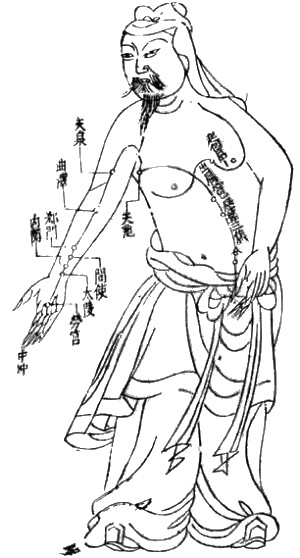The Origins of Acupuncture
 Legend has it that thousands of years ago Chinese warriors were experiencing relief from pre-existing pain when they were wounded by arrows in battle. Chinese doctors observed what was happening, and classical acupuncture was developed. The TCM style (zhen jiu) which is now the most common and widely practiced in North America was not recognized in the People’s Republic of China until after the Cultural Revolution. This style can include ancient methods of classical Chinese acupuncture along with modern methods, such as electroacupuncture.
Legend has it that thousands of years ago Chinese warriors were experiencing relief from pre-existing pain when they were wounded by arrows in battle. Chinese doctors observed what was happening, and classical acupuncture was developed. The TCM style (zhen jiu) which is now the most common and widely practiced in North America was not recognized in the People’s Republic of China until after the Cultural Revolution. This style can include ancient methods of classical Chinese acupuncture along with modern methods, such as electroacupuncture.Although it is generally thought that all forms of acupuncture outside of China have their origins in classical Chinese, there are those that believe it was first introduced to India. As part of Ayurveda, the ancient Indian holistic medicine, women would pierce specific points on their ears to treat illnesses in other areas of the body. With the many years of British rule in India, however, the technique lost its significance and it is only fairly recently that there has been a resurgence in interest in acupuncture.
Several countries in the Far East have now developed their own forms and schools of acupuncture. Modern Japanese Meridian Therapy follows techniques that were traditionally practiced by blind acupuncturists who were more sensitive to feeling pulse and meridian pathways. In Korea a popular form of acupuncture is focused only on the hands. It is said that there are over 300 points covering 14 meridians on the hand alone that relate to all parts of the body. In Vietnam the famous acupuncturist Dr Nguyen Tai Thu is a pioneer in using techniques for detoxification from drug addiction and for anesthesia in surgery. Tibetan acupuncture differs from Chinese predominantly in its use of different meridians and acupoints. Although it recognizes five elements (pace, wind, fire, earth and water), it condenses these into The Three Humors of wind, bile and phlegm.
In the West acupuncture did not become popular until the second half of the twentieth century. Modern technology, such as the use of lasers and ultrasound, is being integrated with ancient Chinese methods to make acupuncture more of a science than an art form. In France, where acupuncture is now well established within the medical community, the neurologist Paul Nogier has developed a system based on neuroendocrine theory rather than traditional Chinese techniques.
Acupuncture is certainly one of the most common treatments offered for alternative pain management in the West today. In the United Kingdom and many other European countries acupuncture is offered for pain relief in hospitals and clinics. It is hoped that it will also continue to gain in recognition for its benefits in relieving many health conditions.